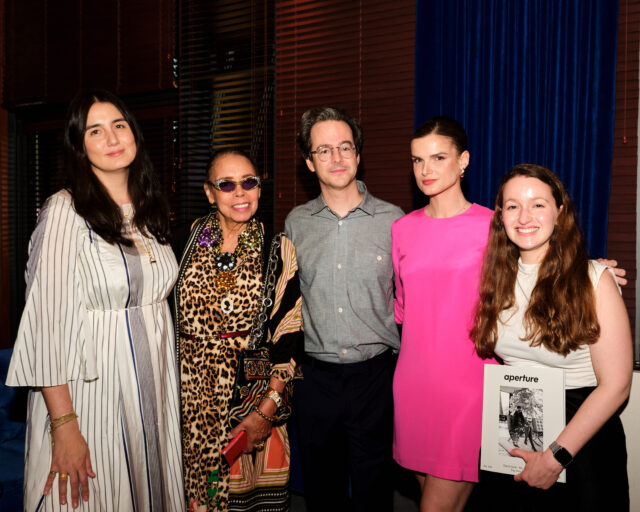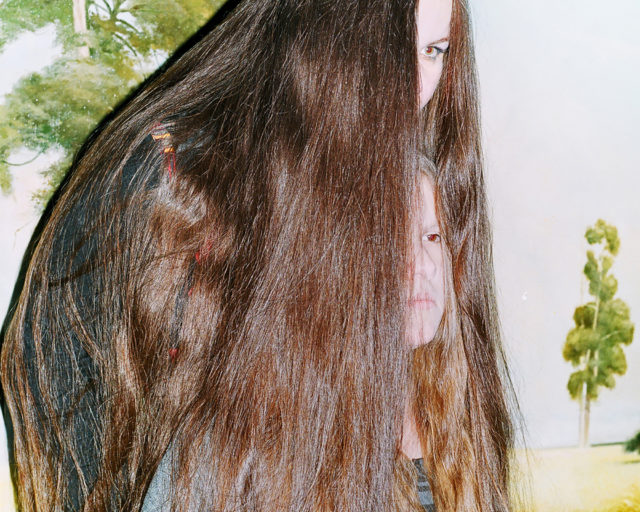Emmanuelle Alt: Conversation with Penny Martin

Inez & Vinoodh, Emmanuelle Alt, 2014 © Inez & Vinoodh and courtesy Gagosian Gallery, New York, and The Collective Shift
Fashion photography can be a nostalgic business, but Emmanuelle Alt’s appetite for the unexpected and glamorous keeps her in the vanguard of taste. A forty-seven-year-old stylist who learned her trade at French Elle, Alt is celebrated for reinvigorating the industry’s tired ’70s fashion clichés with surprising, sporty modernity since joining its most prestigious magazine, Vogue Paris, as fashion director in 2000.
Taking over from Carine Roitfeld as the publication’s editor-in-chief three years ago has demanded a more global view of making a magazine, shifting Alt’s focus away from styling and aesthetics alone. She may not now enjoy the luxury of being on set with Mario Testino, David Sims,
and Inez & Vinoodh every week, but Alt still has the knack of intuiting exactly what a photographer needs to make a truly great picture. Penny Martin, editor of the women’s title The Gentlewoman, interviewed Alt at the Vogue Paris offices on Rue du Faubourg Saint-Honoré this past May.
Penny Martin: Let’s start in the present. Emmanuelle, tell me about your most recent shoot—how did it come about?
Emmanuelle Alt: I was just in St. Barths with Inez & Vinoodh, shooting for our June/July issue. I’ve known them for about twelve years, so we’ve developed an easy way of working. We all love the same period of photography. And it’s not only the images; it’s the whole culture—a certain time of models, clothes, a certain time in music.
PM: I gather you started off in music videos?
EA: Yes, when I started styling, videos were very important. It was the era of Jean-Paul Goude and Jean-Baptiste Mondino, a totally new medium.
PM: Was this while you were at Elle?
EA: Yeah, I was working as a production assistant at the same time. I wasn’t sure if I wanted to be a director; I was just fascinated by images, I think. I assisted on some Mondino videos; at that time he was fashion photography’s God. The stylist was Ray Petri. It was a brilliant team.
PM: So that was the golden age for you?
EA: Yes, for me, probably the beginning of the ’80s, the end of the ’70s . . . I think your first music and visual influences stay with you forever. My group all listens to Bowie; there’s nothing better. You live with what was around when you first became curious.

Vogue Paris, December 2013. Cover photograph by Inez & Vinoodh © Inez & Vinoodh/Vogue Paris
PM: When it comes to initiating a shoot, then, are those common influences even mentioned between collaborators of the same age?
EA: Well, this story began with Inez and me exchanging images by e-mail. Sometimes it comes from almost nothing; it might just be a color. When you’re shooting in the sun—you know that strong blue sky in St. Barths—you need a contrast. So I might say, “What do you think about red and white?” And Inez is like, “Oh, yeah, sure!” I’ll send a picture of a red shoe and a René Gruau illustration, which is full of red, and just a silhouette or a little sketch. It’s not always photographs—often it’s a painting or a frame-grab from a YouTube film. Very quickly, we’ll start to build up an image of a woman, and then we can discuss the casting. Some photographers will keep changing their casting or think they need a stronger idea. But Inez isn’t someone who hesitates. It’s like three phone calls and everything is booked.
PM: Do you ever have preproduction meetings with photographers in person?
EA: Unfortunately, everything is done over phone and e-mail since no one is in Paris. Of the bigger photographers we work with, I think Peter Lindbergh is the only one. Besides, at this time of year, we need to shoot overseas for the light. And unless photographers have made a career out of studio photography, like Penn or Avedon, I think most of them get bored if they’ve been stuck in there all year.
PM: The studio is all about control—leaving very little to chance so an idea can be executed exactly as imagined.
EA: Whereas outside you’re looking for accidents. I’m going on a trip with David Sims in a few weeks—once a year we take him on location. For a studio photographer like him, who controls the lighting, everything, he has to face a lot of unexpected things outside. Suddenly, rain makes a fantastic picture or there’s a dog in the street. The only thing is it costs a lot of money to fly photographers and their teams out there. We’re far from the days of Helmut Newton traveling with one assistant, one person doing hair and makeup, the model, and a fashion editor. Five people: it was nothing.
[…]
The full-length interview appears in Aperture‘s “Fashion” issue, Fall 2014.


























